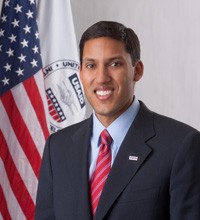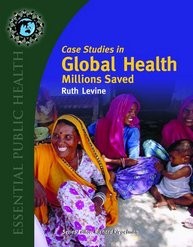Millions Saved
By Ruth Levine and the What Works Working GroupChosen by: USAID Administrator Rajiv Shah
Synopsis:
The second half of the 20th century saw unprecedented improvements in human health. While some can be tied to overall social and economic gains, specific efforts to address major causes of disease and disability—providing better and more accessible health services, introducing new medicines and other health technologies, and fostering healthier behaviors—were crucial to raising the bar on health for millions of people around the world.
In Case Studies in Global Health: Millions Saved, Ruth Levine and the Center for Global Development’s What Works Working Group identify, describe and analyze what has had demonstrable impact, proffering crucial lessons about how to tackle challenges of HIV/AIDS, child survival and global health inequities in the future.

Administrator Shah: This one is personal for me. I participated in the working group that helped produce this publication. We received hundreds of examples of potential success stories, and chose those that were based on the most rigorous data and that succeeded at scale. These aren’t about saving two lives in one village somewhere, although that is important to do. These stories are about transforming the health of entire countries and reaching hundreds of thousands over time. All these projects also built institutional capacity that was sustained after the donors went away.
This book demonstrates that smart, well-constructed investments in global health can achieve widespread impact on the way people live. Some of the big successes they discuss include iron and iodine fortification, which improved the overall level of human health and nutrition. And in the field of family planning, by reducing the population growth rate, development programs created the underlying basis for economic growth.
USAID is putting some of those “lessons learned” to work in our Feed the Future program. We have taken all of the best practices of this report and put that into how we design food security programs around the world. We build partnerships with local institutions, do rigorous reporting and evaluation, choose projects that are scalable, and design projects that can be sustained after our money ebbs away.
Discussion Questions
- Which of these case studies surprised or impacted you the most?
- Which case best exemplifies the importance of countries building strong health systems?
- What does sustainability mean to you? Why do you think it is important that health projects developed or implemented by outside donors be sustainable?
- In last week’s book club selection, A Farewell to Alms, Gregory Clark challenges the notion that outside intervention can truly help poor nations progress. Is there anything in Millions Saved that causes you to agree or disagree with Clark’s premise?
Get Involved: Use the comments section of this blog post to share your answers, or tweet them to us at #fallsemester








Comment
Make a general inquiry or suggest an improvement.